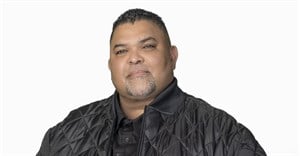
Subscribe & Follow
Advertise your job vacancies
Jobs
- Sales Representative - Mall Advertising East Rand
- Static Production Coordinator Cape Town
Promoted content
Researching outdoor in South Africa
Clear Channel Independent comments on a pilot research study on outdoor, based on Global Positioning System (GPS) technology, which was conducted in South Africa by Nielsen and SAARF. (cf. "New method of measuring outdoor tested in SA")
In January 2002, together with Telmar, we launched the Clear Channel Independent/Telmar Harris Outdoor synergy model, after a lengthy and costly development process. This planning tool has provided the media planner with the means to produce plans for outdoor campaigns, yielding Reach and Frequency and GRP scores, thereby making Outdoor comparable to the other main mass media. As input to this outdoor planning model, we have made use of the latest BMR population statistics, and the AMPS 1996 A-values - the latter being the most recent industry research on Outdoor in South Africa.
This latest Nielsen pilot study, based on GPS technology, shows promise for more accurate and meaningful data for our model, as it would provide empirical data on the potential Outdoor audience.
Our enthusiasm for the Nielsen exercise has, however, to be tempered by practicalities:
1. The pilot study made use of meters that can only be installed in cars - the universe is therefore adults aged 18 years and older and who own their own motor vehicle - this represents only 16% of the total adult population in South Africa (AMPS 2002). Outdoor has a broader audience, and that includes pedestrians and commuters. We hope that the personal meter, which Nielsen Media Research is still developing, will provide fuller coverage.
2. The pilot study was restricted to the Randburg/Sandton area, and the test results indicate higher traffic volumes along the localized arterial roads than along the freeways. This is not surprising, bearing in mind the sample framework; however, it does highlight the need for a survey that would cover a broader area, to include the traffic from other regions. The question then arises: how big an area? If we were to focus on the Gauteng province, say, then we would lose out on the traffic inflow from Ga-Rankuwa, which is in the North-West province. Ideally, we need to survey the whole country simultaneously.
3. This then raises the question of cost. Despite the fact that the 100-odd car meters used in the SA pilot test were paid for by the American companies and the Outdoor Association there, SAARF contributed R200 000 for the fieldwork alone, which accounts for 16% of SAARF's allocation to Outdoor. (Historically, SAARF only conducts a study for Outdoor every five years, other than the standard question that appears in the main AMPS survey).
In conclusion, we laud the technology available, but cost has to be the main consideration. It is surely unreasonable to expect an industry with a 4% Share-of-Voice to spend monies equivalent to the likes of TV or Radio, on audience measurement.
We nevertheless remain committed to providing the media fraternity with up-to-date, meaningful and acceptable research on the Outdoor audience. Regrettably, our quest for the 'truth' cannot be at any cost, and we hope that our proposals for the way forward, at the next SAARF Outdoor council meeting, can be accommodated.












